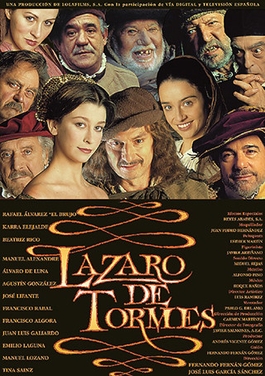
Francisco Rabal Valera, better known as Paco Rabal, was a Spanish actor, director, and screenwriter born in Águilas, a town in the south-western part of the province of Murcia, Spain. Throughout his career, Rabal appeared in around 200 films working with directors including Francisco Rovira Beleta, Luis Buñuel, José Luis Sáenz de Heredia, Carlos Saura, Pedro Almodóvar, William Friedkin, Michelangelo Antonioni, Claude Chabrol, Luchino Visconti, and Gillo Pontecorvo. Paco Rabal was recognized both in his native Spain and internationally, winning the Award for Best Actor at the Cannes Film Festival for Los Santos Inocentes and a Goya Award for Best Actor for playing Francisco de Goya in Carlos Saura's Goya en Burdeos. One of Spain's most loved actors, Rabal also was known for his commitment to human rights and other social causes.

Alfredo Landa AretaMML was a Spanish actor.

Don José Álvarez de Toledo Osorio y Gonzaga, 11th Marquess of Villafranca, Grandee of Spain, jure uxorisDuke of Alba de Tormes, Grandee of Spain was a patron of the artist Francisco Goya.

The Naked Maja is a 1958 Italian-American co-production made by S.G.C., Titanus, Metro-Goldwyn-Mayer and United Artists. This historical film recounting of the romance between the painter Francisco Goya and the Duchess of Alba was directed by Henry Koster, and produced by Silvio Clementelli and Goffredo Lombardo. The screenplay was by Norman Corwin, Giorgio Prosperi and Albert Lewin based on a story by Oscar Saul and Talbot Jennings. The music score was by Angelo Lavagnino and the cinematography by Giuseppe Rotunno.

José María Sacristán Turiégano, better known as José Sacristán, is a Spanish film, theatre, and television actor.

Goya en Burdeos is a 1999 Spanish historical drama film written and directed by Carlos Saura about the life of Francisco Goya, the Spanish painter.

Jaime Rosales is a Spanish film director, screenwriter and film producer.

María Morena is a 1951 Spanish drama film directed by José María Forqué and Pedro Lazaga. It was entered into the 1952 Cannes Film Festival.

Padre nuestro is a 1985 Spanish drama film directed by Francisco Regueiro. It stars Francisco Rabal, Fernando Rey, and Victoria Abril.

The Black Duchess is a 1797 oil-on-canvas painting by Spanish painter Francisco Goya. The subject of the painting is María Cayetana de Silva, 13th Duchess of Alba, then 35 years old. It is a companion piece to the more chaste The White Duchess, completed two years earlier.
Currito of the Cross is a 1965 Spanish drama film directed by Rafael Gil and starring Francisco Rabal, Arturo Fernandez and El Pireo. It is an adaptation of the novel of the same title by Alejandro Pérez Lugín.
Night and Dawn is a 1958 Spanish drama film directed by José María Forqué and starring Francisco Rabal, Zully Moreno and Manuel Alexandre.

Road to Rocío is a 1966 Spanish musical film directed by Rafael Gil and starring Carmen Sevilla, Francisco Rabal and Arturo Fernández. It was the third version of the story to be filmed following The White Dove (1942) and It Happened in Seville (1955).
I Was a Parish Priest or God's War is a 1953 Spanish drama film directed by Rafael Gil and starring Claude Laydu, Francisco Rabal and José Marco Davó. It was awarded the Gran Premio at the first ever San Sebastián International Film Festival. It was also shown at the Venice Film Festival where it was awarded the Bronze Lion.

The Big Lie is a 1956 Spanish film directed by Rafael Gil and starring Francisco Rabal, Madeleine Fischer and Jacqueline Pierreux.

The Song of Sister Maria is a 1952 Spanish drama film directed by Rafael Gil and starring Dominique Blanchar, Francisco Rabal and María Dulce. It is also known by the alternative title Path to the Kingdom.

María Teresa Rabal Balaguer is a Spanish actress, singer and television presenter. The daughter of actors Francisco Rabal and Asunción Balaguer, she first appeared as child actor before going on to star in several 1970s films as an adult.

Benedicta SánchezVila is a Spanish photographer and actress.

Lázaro de Tormes is a 2001 Spanish comedy film directed by Fernando Fernán Gómez and José Luis García Sánchez which stars Rafael Álvarez "El Brujo" as the title character.
















